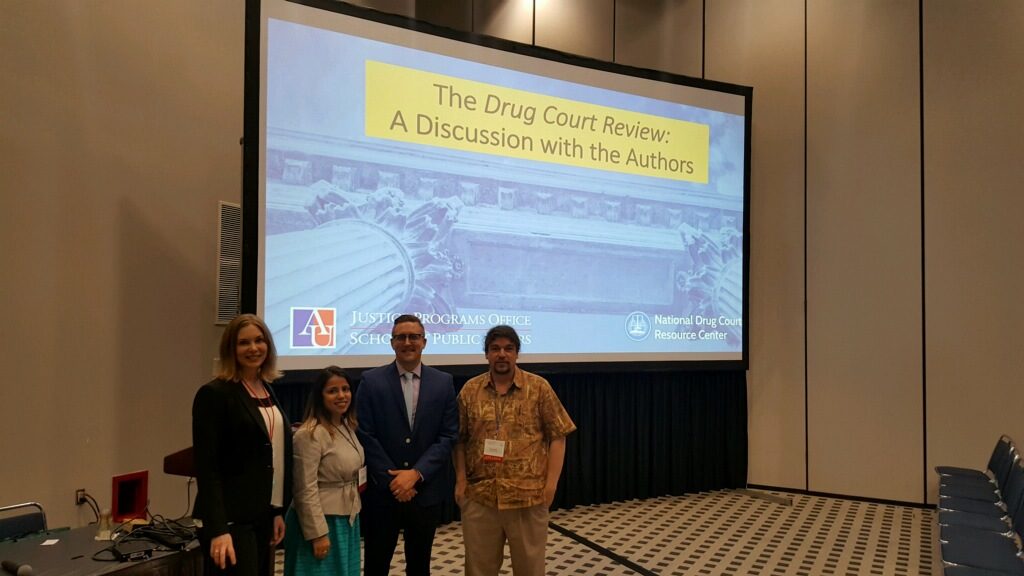
This is the second blog post in a two-part series on researcher-practitioner partnerships by JPO’s Associate Director of Research, Dr. Julie Baldwin. Part one focused on obstacles to researcher-practitioner partnerships.
As previously noted, a researcher-practitioner partnership (RPP) is a collaborative relationship in which researchers and practitioners collectively engage in strategic problem solving to: 1) develop evidence-based strategies that improve effects and efficiency of a court or program and 2) implement those strategies into practice with fidelity. As such, these innovations must be both data-driven and practical. What’s the point of having a theoretically sound strategy that cannot be feasibly implemented or, conversely, continuing to implement a strategy that has no empirical impact? Neither of these one-sided strategies use resources wisely or contribute to the achievement of an agency’s goals. Therefore, robust RPPS are marked by active participation and substantive contribution from both partners.
Additionally, I have found that mutual respect, the collaborative development of shared goals and partner roles, and effective and consistent communication are paramount to success. First, each partner must value each other’s expertise and view each other as equals. Research and practice go hand in hand – one is not more important than the other. Without practice, strategies and theories are merely abstract notions, and without sound research, it is unknown whether a practice has its desired effect. When partners possess this understanding, it facilitates a willingness to meaningfully collaborate. Each is able to join the table with respect for both orientations that serves as the foundation for the collaboration.
With mutual respect in place, the partners can then develop the goals and roles of their partnership together. One side cannot dictate these alone as substantive contributions from both orientations ensures that the strategies are both data-driven and practical (each orientation is represented) and organically produces buy-in (where each has a stake in the goal and roles and desire to see their fulfillment). Further, each should explain the value of their goals to each side as they may not be immediately apparent. While these activities require the partners valuing and respecting one another, they also require effective communication.
Effective communication is consistent, frequent, and based in respect and understanding of each partner’s orientation and job demands. Taking into account time each’s time constraints, a communication plan should be developed that outlines how frequent communication should be at a minimum. All parties should consistently adhere to the plan even if the communication is merely updates of delays or challenges. This not only keeps all parties informed and provides the opportunity for timely identification and resolution of issues but also strengthens the relationship. While this may seem small and, at times, inconvenient, communication is key. If you think about whom you speak to most often, they are most likely the individuals that you value and have strong relationships with; if inundated with requests, you’d prioritize theirs if possible. Additionally, your communication should be respectful, meaning mindful of your partner’s background and geared toward the partner. Don’t use jargon that you know they do not understand. Show respect to communicate effectively. Remember, you’re on the same team and working toward the same goals—that you created together!
I have made a concerted effort to devote most of my academic career to translational research and RPPs, and I look forward to continuing to do so in my new position as the Associate Director of Research at the Justice Programs Office (JPO). I can’t wait to support practitioners and researchers in this new capacity. What excites me most about JPO is that they truly value, support, and promote the impact of research on policy and practice. I mean, what is the point of research and practice if it’s not going to actually improve the real world?
